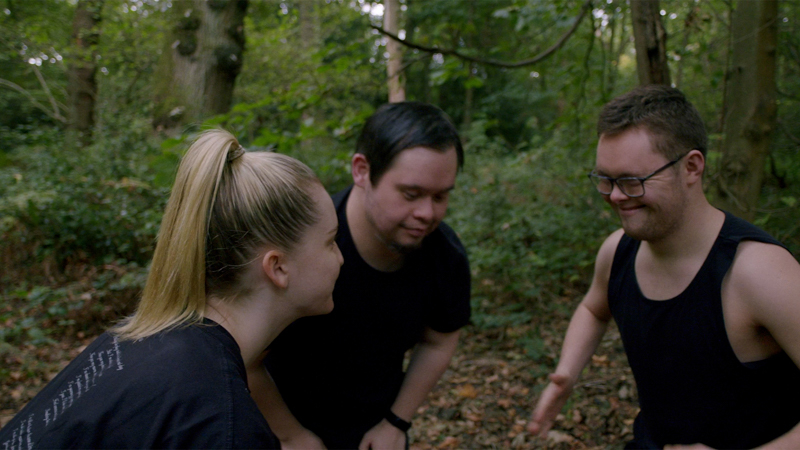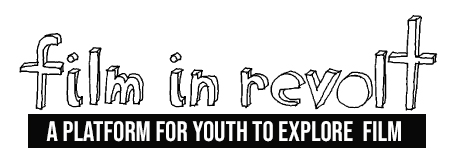
Rewards For The Tribe lovingly documents the process of collaboration and creation between disabled and non-disabled dancers, of the troupes Chunky Move and Restless Dance Theatre, to create a final piece of the same name. The documentary is an intimate look into their processes, from first rehearsal to opening night, full of quirk and heart. I sat down with director Rhys Graham to learn about this journey.
Thank you so much for sitting down and talking to me today. I really love the film, it has so much love for the world and I feel like this is really achieved by the intimacy in the film. You have such personal access to the rehearsal room and the devising process. What was your relationship to the subjects, and how did you actually build and access this trust?
The genesis of the project was early discussions with my producer Philippa Campey, who was working with Chunky Move. We’ve made a lot of films together, both fiction and documentary, and [Chunky Move] were interested in opening their doors to possible projects.
One of the things that they were talking about was a potential collaboration between Restless Dance Theatre and Chunky [Move] and for me, I was quite interested. I’ve worked in and around some performance aspects and worked with artists and theatre makers at various different points in my career. And I was more interested in doing something that was less about a work itself or a piece of art, than I was interested in the human relationships that make up that.
The thing for me that’s always interesting is that dancers are like the frontline punk rock of any arts, you know, it’s a very hard life for them. There are not very many opportunities. They work and train so incredibly hard and often there’s very little pay, very little support. I just love the idea of digging into what makes these artists, these dancers, so passionate about their art and their craft and so passionate about working together; this is the only thing they can do.
For any process I do, working with actors or working with documentary subjects, I do try and spend a lot of time around and getting to know them before I dig into any of the personal and intimate stuff. A lot of the stuff that’s in their domestic spaces or about their relationships I did at the very end of shooting, until they felt very comfortable and trusting in the relationship that we have as a filmmaker and to them as a subject. We traveled together. I witnessed the rehearsals, filmed lots of rehearsals, had discussions, and then you reach a point, I think, where you work out your shorthand dialogue. You work out what things you’re going to connect on and what things are right for the film.
Throughout the film, there’s a lot of solo performances from the performers. Was that something that they started doing when you were filming, or did you prompt them? Was that born out of that trust that you built with them?
I think the film is about how a group of very different individuals find a shared language, and how they reach and arrive at that process of trust and intimacy between each other. But I wanted to also show that these are all individuals with their own way of being in the world and their own way of moving in the world.
I asked them if they’d be happy to do a bunch of different improvisations or moments that were movement based. And for me, that was like, if this was a drama, those are the moments your characters go off on their own journeys of self exploration before they come back into the fray. That was very much about the audience feeling more connected and closer to them as individuals. But also it’s about, in a documentary sense, of giving the individuals the agency to represent themselves in the way they want to, and to speak with their own voices, and to express themselves in a way that is empowering and recognizing of them and their own distinctive needs, expressions, passions, and that’s the kind of stuff that interests me.
You talked about connecting with the audience, and your cutaways, the chapters, and the definitions that pop up, they sort of break up the flow. Are you creating those definitions as more of a device for breaking up that flow, or was it more to further connect with the audience?
It was more playful, and they’re deliberately interrupting and deliberately obstructing the flow. We wanted the film to have a direct dialog with the work that they were doing, and because the dancers were trying to work with contemporary dance, they’re exploring different ways of communicating connection. Film can be very conservative in its form and structure, and we wanted to have something that was a bit more playful and joyful, that was with the audience a bit.
It’s nothing too dramatic, but by interrupting things and having a-rhythmic moments where you suddenly drop out, you end up in another space. There’s obviously moments that are fluid and dream-like and gentle and joyful. It’s about disrupting the idea of perfection or the idea of coherency.
We actually did use a process of randomness for some of those interruptions. And then the idea for a lot of the definitions was to be playful about the fact that this is a project with a lot of ideas going into it. As Anthony [Hamilton] says at the end of the film, a lot of those ideas don’t necessarily end up on stage, and that’s okay. It’s okay if there’s gentle brushstrokes of those things, which I think is such a beautiful expression that he has. We thought it would be quite fun to go, well, what is in this? There’s art theory, there’s theories of bodily perfection, there’s a whole lot of stuff that actually is behind the project that is fun to explore, so we wanted to take that opportunity.
And I love that disruption, I feel like it adds so much excitement, but also the score is so evocative, and it really sounds exactly like a Kandinsky painting, it sounds like all of the Cubist/Bauhaus inspirations that Anthony Hamilton was drawing on. How were you collaborating with the composer to achieve this?
Well, [Aviva Endean] is such an amazing composer, and because she had scored for the original work, there were some elements that the dancers had been working with and responding to already. I really wanted to honor that, the development process and this relationship that they’ve got, and so, I asked her if she would be happy to score new and additional pieces of music. And we had a really great process.
We tried to keep that collaboration quite open so that she could send us pieces that we could edit to. When Delaney [Murphy] was cutting she could have an independent discussion about what the needs were for the particular sequence, and then start working with tone and emotion and trying to make things feel like they’ve got their own internal dynamic. It was a beautiful, beautiful relationship and collaboration.
The film as a whole is really visceral, I found myself really responding to it on a sensory level, you even have this P.O.V footage with a GoPro strapped to the performers. Was your goal always to craft a sensory experience for an audience?
In the films I’ve done, they’re all very different; I’ve done fiction and I’ve done documentary, and I’ve done more experimental works and and now that I’ve done a few dance films, the thing that is in common with all of them, is that I’m really interested in getting close to the surface of the skin of the human experience in a way that is is somehow a shared experience and a shared dynamic between the audience and the film.
In fiction, I try to have visceral and sensorial connections with fictional characters. In documentary, it’s a little different, because they’re real world characters. But what you want to do is create a sense of intimacy and trust between the subject and the filmmaker and the audience, so that the subject is really sharing who they are, and you do get that genuine human connection, which in film can be sensorial.
Dance is a really physical, visceral expression, so we wanted our audience to feel in the room. And a part of that was not just watching on at a distance, you want to get into a space of intimacy and sharing with the story and with the characters, so that we genuinely feel we’re part of something and and I think there’s something joyful about that, which is what I’m really, really interested in putting into film.
You really achieved that for an audience. And how did the dancers actually find it? Did they find that sensory immersion was true to their experiences as well?
It’s always really difficult for people to reflect on themselves on screen. My aim is always to make sure that people feel like that’s them up on screen. They’re sharing themselves. The response that we had has been really positive. And people feel like that. The reception that we got was that we have captured something about the process that they felt had not been captured for them before, and certainly the way that they communicate and interact and that really tender trust that they have in each other, everyone felt like that was a really beautiful part of it. At the launch that we had at Adelaide Film Festival, Mike [Hodyl], who’s always so effusive, wonderful and articulate, he was really quiet, and I just said to him “you okay? How is it? How does it feel?” And he goes, “yeah, I’m just totally overwhelmed, I feel like you’ve, you know, you’ve made us feel like stars.” And that’s really a beautiful way to have launched into the world.
by Parker C. Constantine
Rewards for the Tribe
Sydney Film Festival
